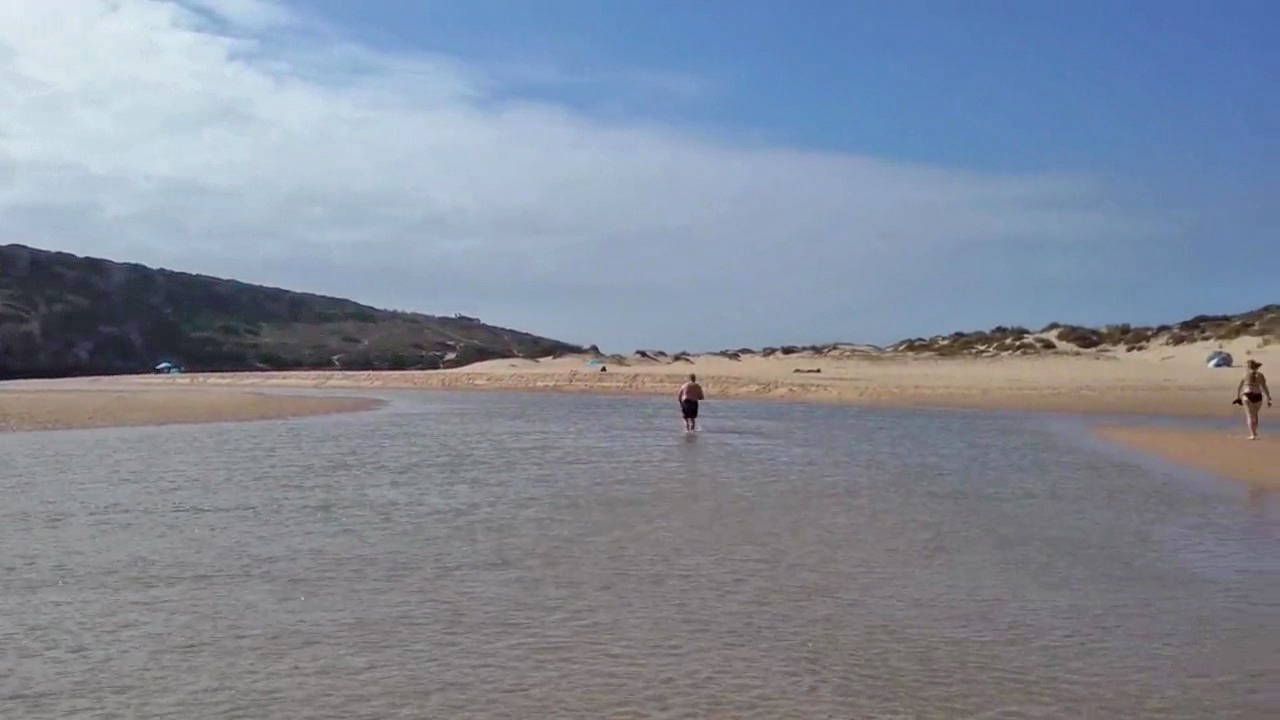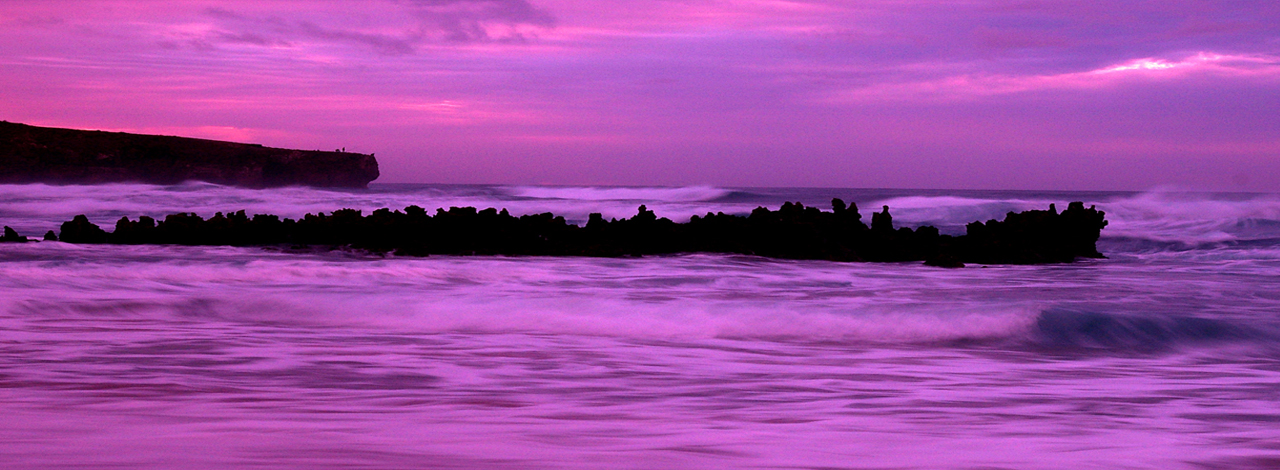
Hi everybody!
[adinserter block=”4″]
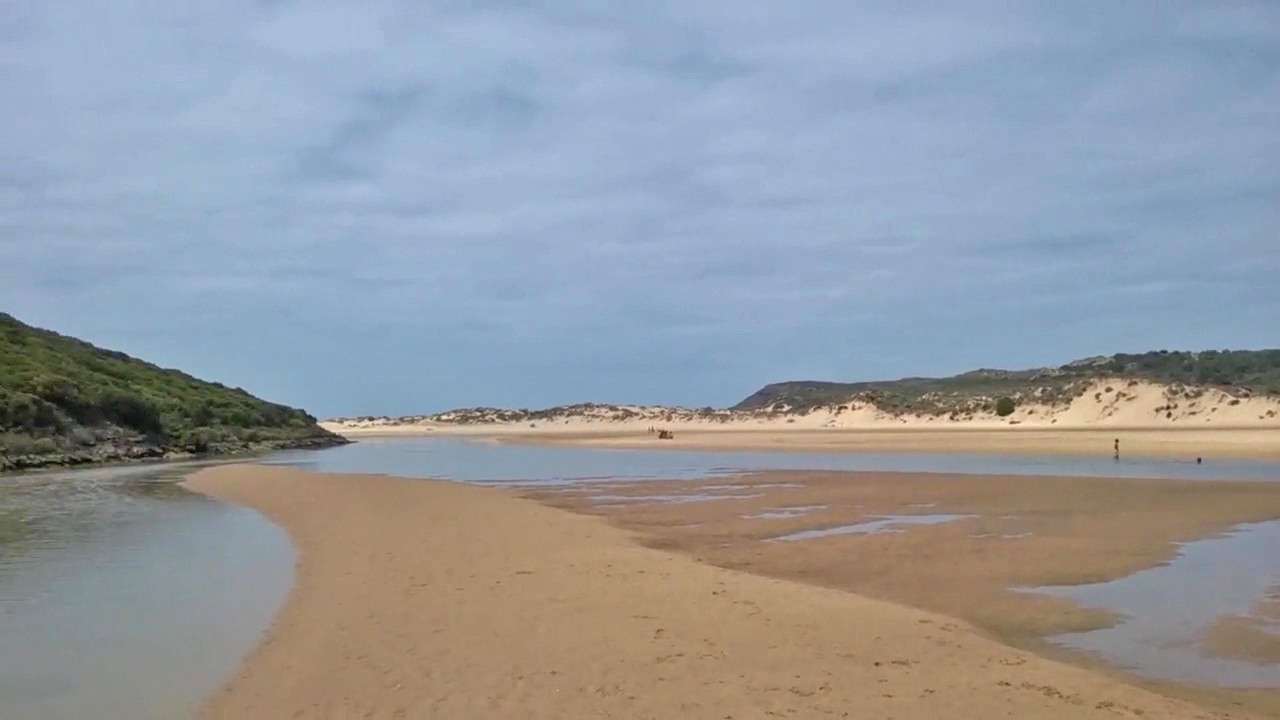
Today we are giving you our guide to Praia da Amoreira, quite possibly our favourite place in the whole Algarve. It´s not a secret cove from a treasure map but we can´t help feeling a slight reluctance in sharing this online. It´s not that lots of people don´t know about it, they do, but many of those in the “know” want to keep this little slice of heaven to themselves. Hey, it´s human nature! But there wouldn´t be much point in or blogs if they didn´t help people to find some of the Algarve´s best kept secrets so let´s get straight to it.
How to get there
Praia da Amoreira as the “Praia” suggests is a beach located on the West Coast of the Algarve. It is easy to miss this gem of a location when taking the national N120 road out of Aljezur heading for Odeciexe, so here´s the first big tip
Look out for the sports centre and swimming pool (desportivo & piscina) shortly after leaving Aljezur behind.
As Amoreira is on the west coast, the majority of us will be travelling from the south coast resorts and villages. The best way is to head for Aljezur taking the A22 to Bensafrim or the national EN125 to Lagos.
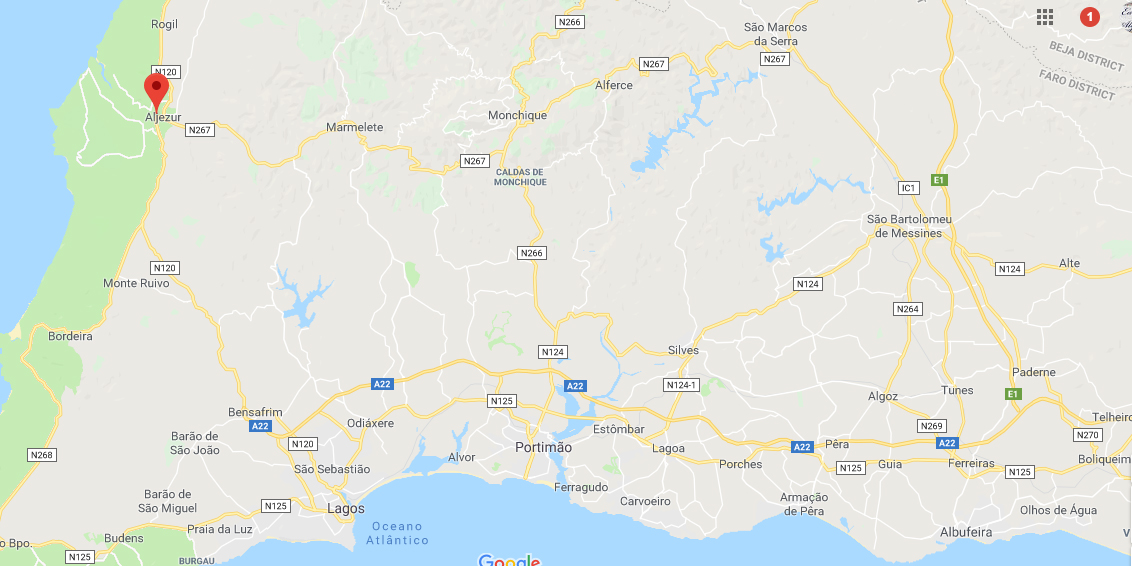
From Bensafrim we take the national EN120 road which winds up through the western end of the Monchique mountain range and returns us to the coast near Mont Ruivo. This is a pleasant drive through pine and eucalyptus tree lined slopes with a scattering of small places to eat along the way. The route is popular with cyclists and you have to admire the fitness of these guys and girls as they grind up the long climb towards Espinhaco de Cao.
After a few kilometres, the road starts to descend once again as we approach the small town of Aljezur. Like all towns with “Al” in the name here in the Algarve, Aljezur was named by the Moors when they were a power in this region. It is a nice town with a castle, market and many surf shops and surf hire businesses (of which more later) Each year Aljezur hosts the “Feira de Batata Doce” or “sweet potato festival” which is a well-attended regional event.
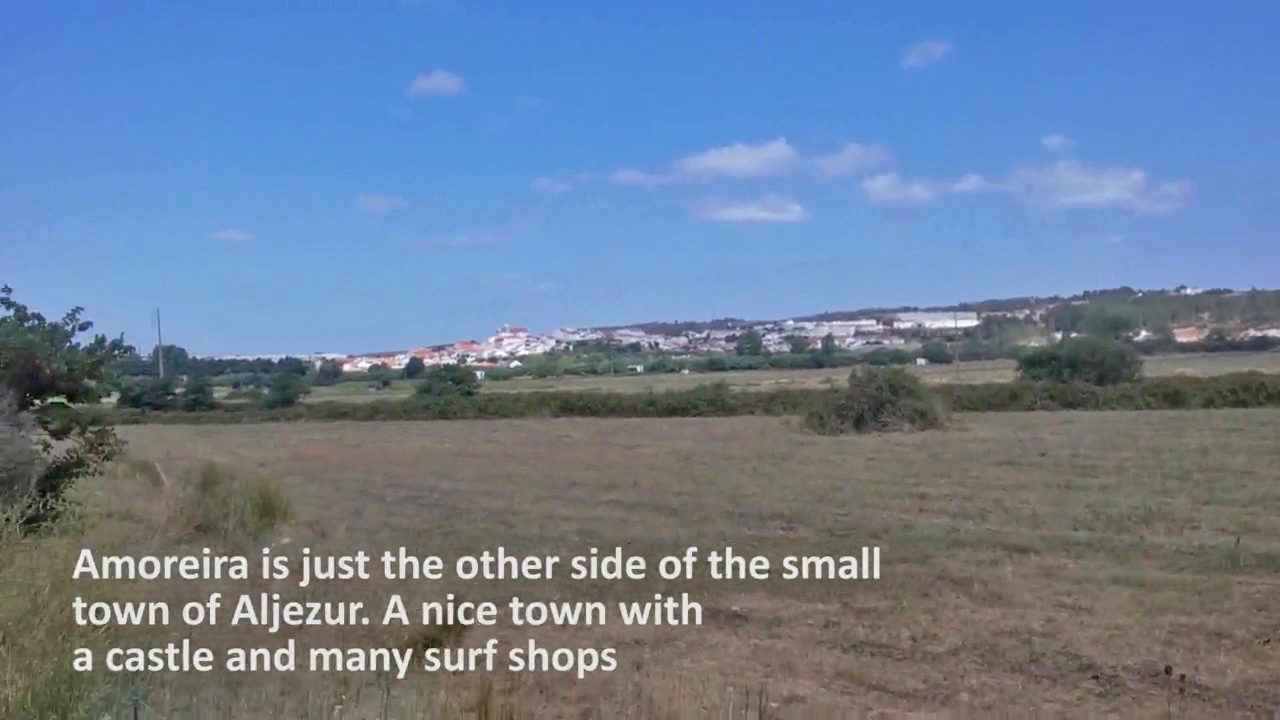
But today we are leaving Alzejur behind and following the national EN120 road towards Odecixee.
We stay on the EN120 and as we start to leave Aljezur behind we pass the “Bombeiros” (fire station) and after just 2Km we see the Desprtivo & Piscina (Sport centre and swimming pool) buildings on our left. This junction does have a sign for Amoreira but it is easy to miss so look out for the sports centre.
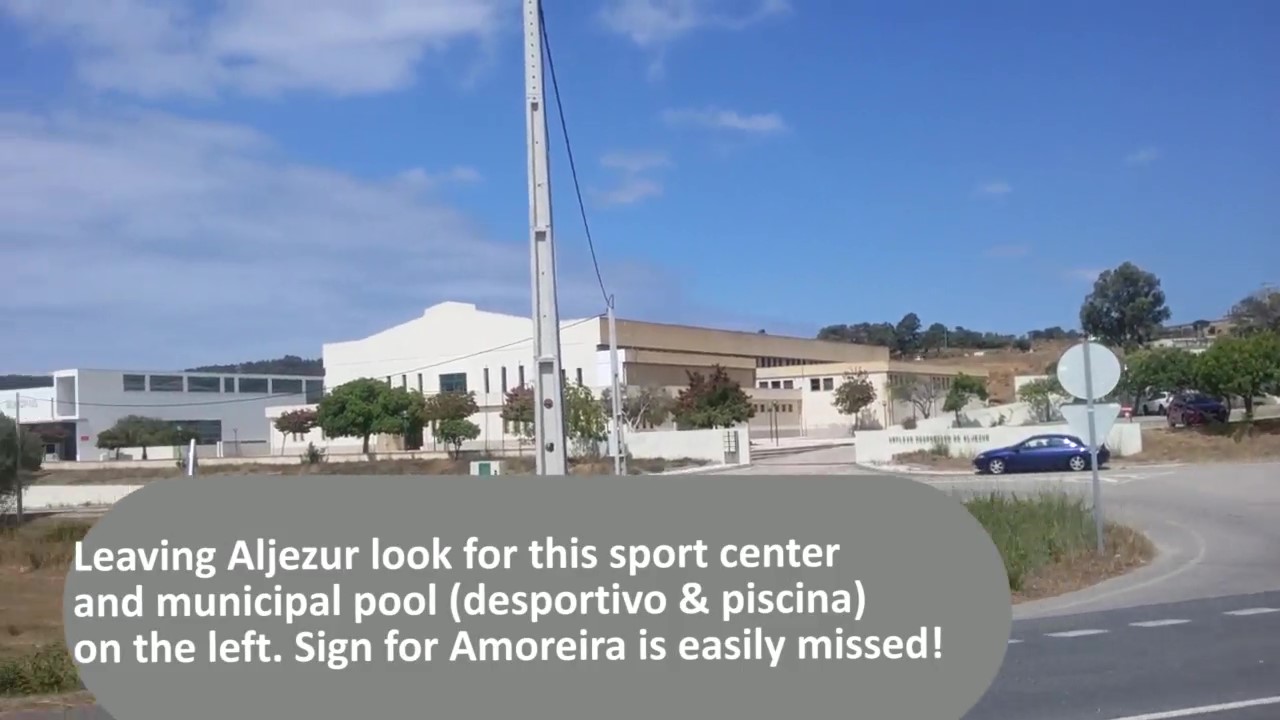
Here we take a left turn directly towards the coast on a road that is essentially a collection of tarmac repairs linked together! Don´t be put off, we have to endure 10 minutes of this but it really is worthwhile.
The road passes by rich green fields on the left hand side with lovely views back towards Aljezur. As we move along, we pick up the river on our left hand side. This is the Aljezur river and it is an integral part of the Amoreira experience.
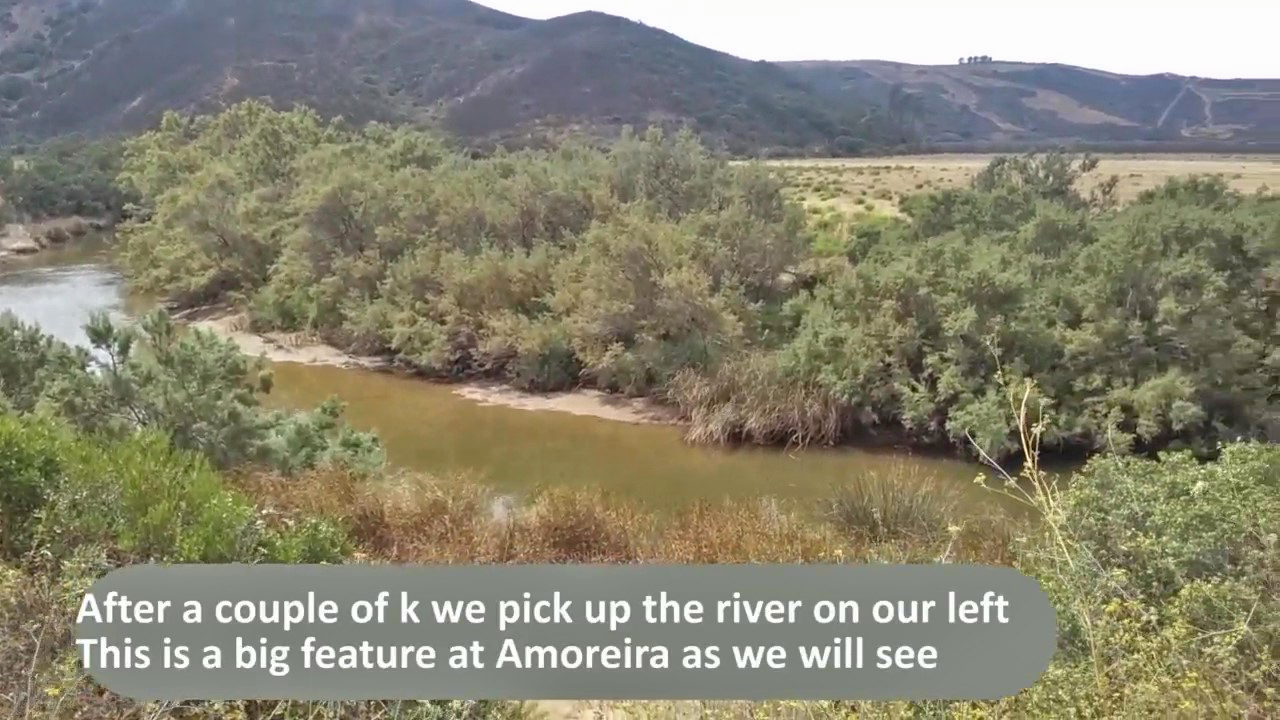
After 10 minutes or so we start to see sand dunes ahead on the left. We have a circular walk planned so we are going to stop at the first clear sight of sand on the left. There is parking along the road at this point.
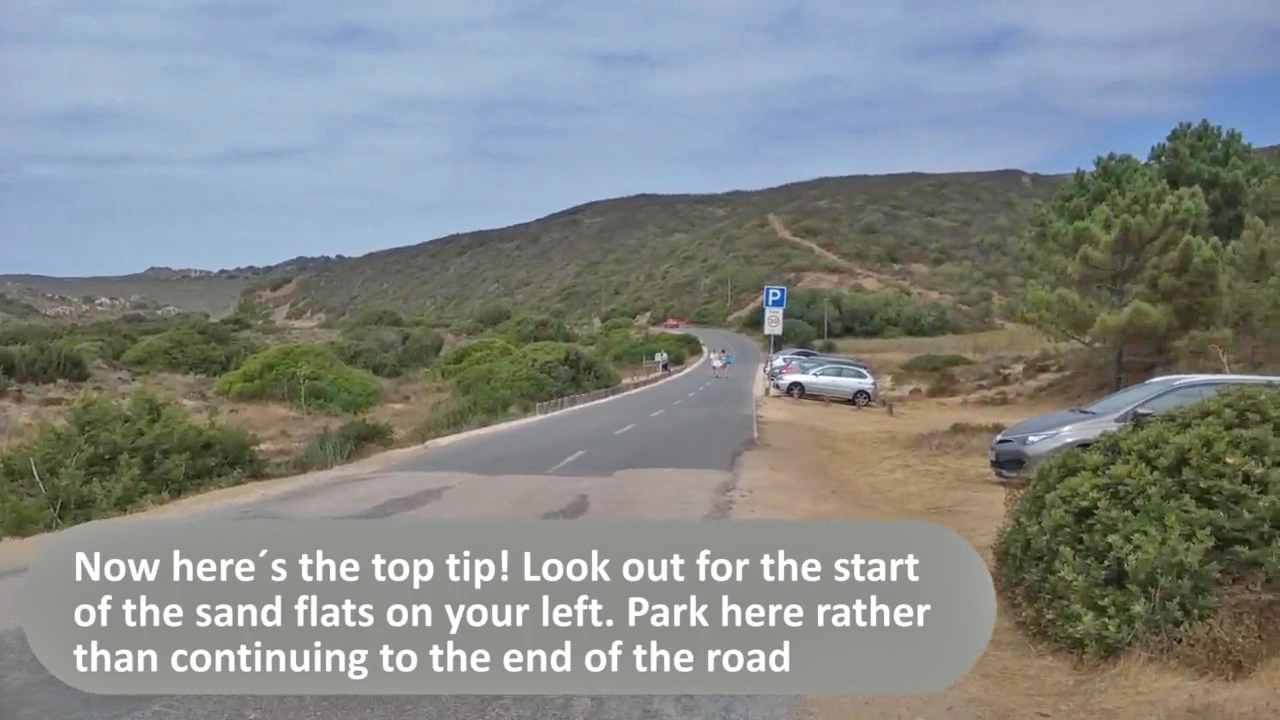
We park up, pick up the essentials (umbrella, beach mat, cooler etc) from the car and head off on to the “beach” between the protected sand dunes. We are in a national park now so fences and restrictions are to be respected.
We have a circular walk planned along the river beach, on to the ocean beach and back along the road to the car
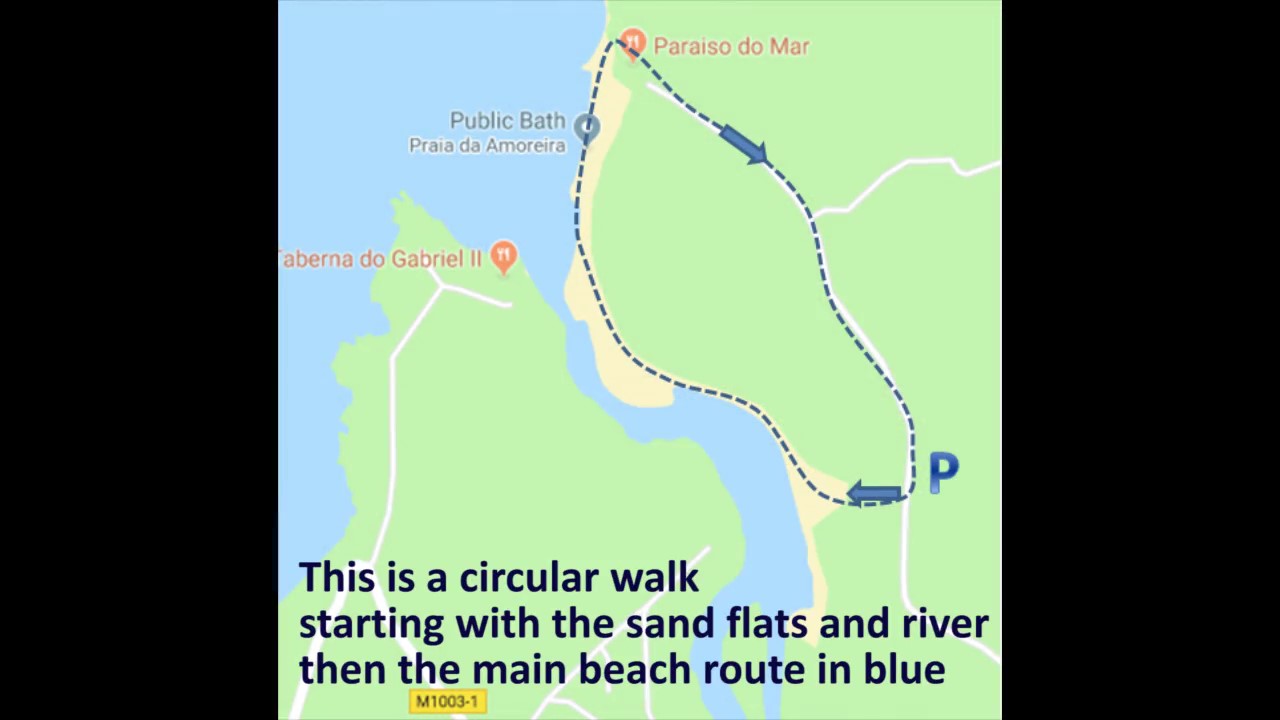
Why visit Praia da Amoreira?
We describe Amoreira as a “beach of two halves” and it really is. We are walking on to the first part of the beach where we will meet the Aljezur river once again.
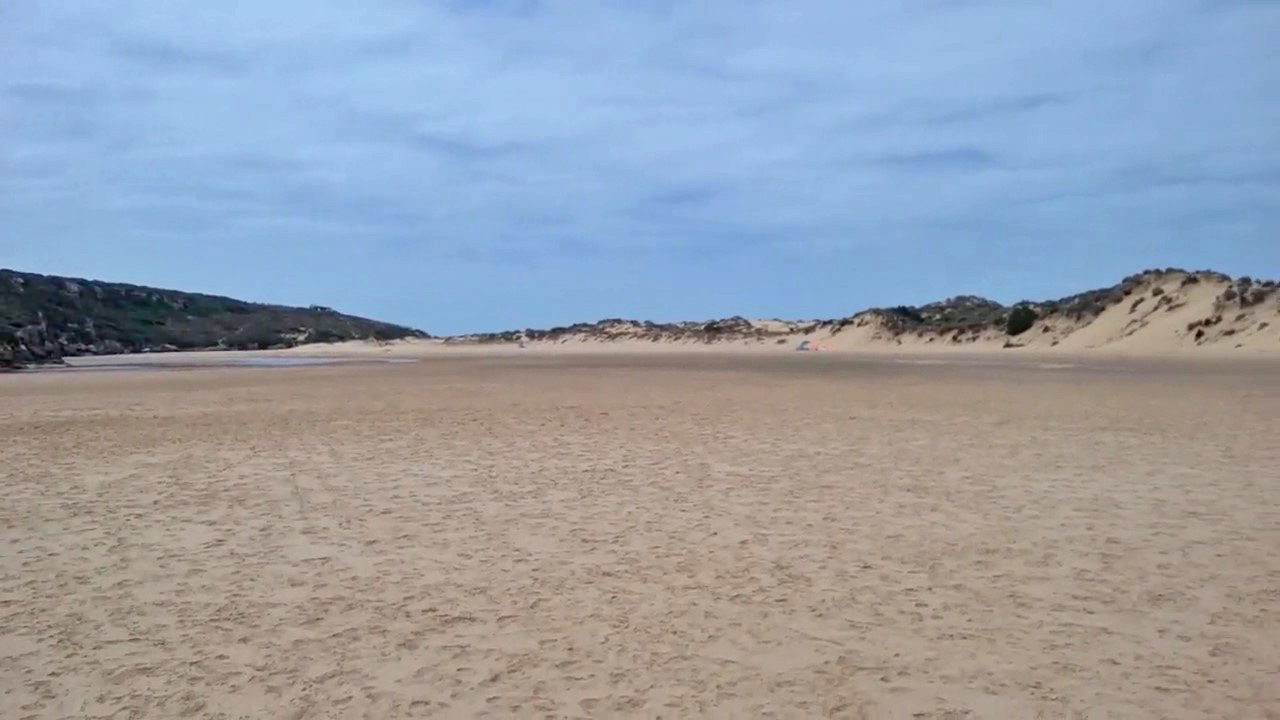
This is a wide expanse of sand flats edged by the dunes at one side and the river at the other. The river here is tidal so just how much river we get depends upon the time of year and time of day. The good news is that there is always some water flowing and at low tides the river separates around small sand “islands” it is shallow at low tide with pockets perhaps reaching above the 1M mark which makes it ideal for supervised children to play in relative safety.
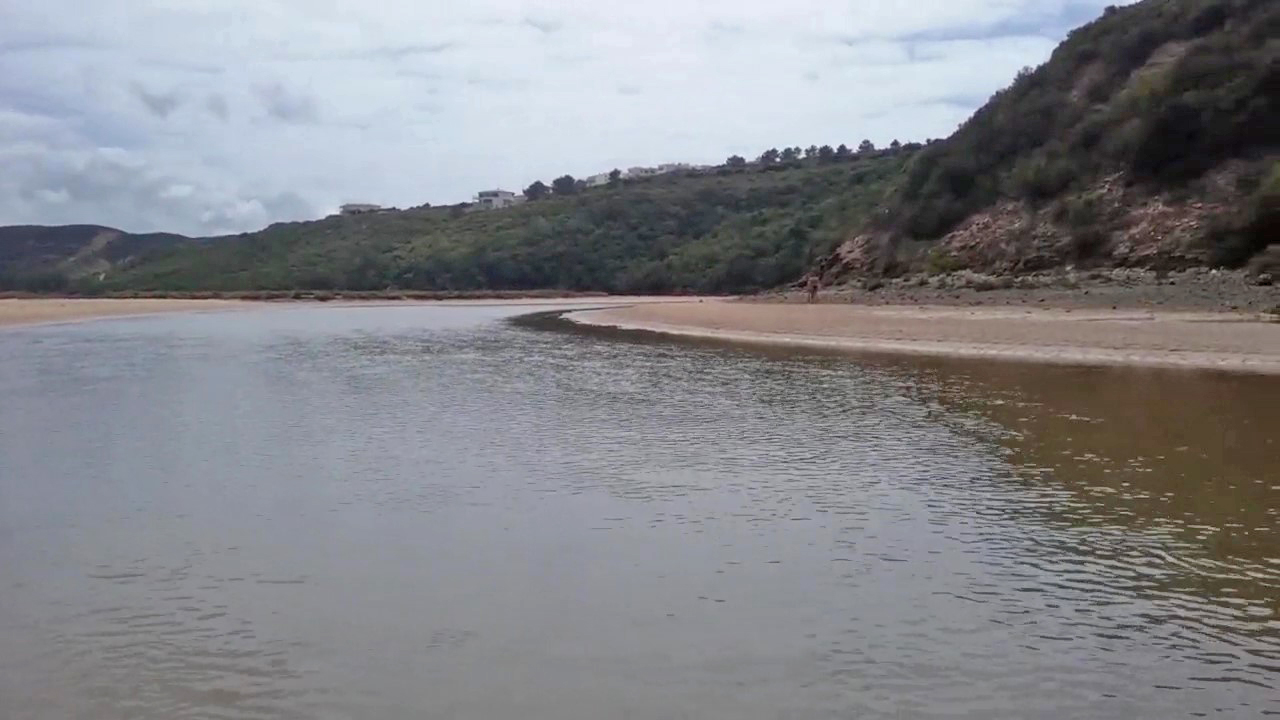
At high tide some parts of the river are deeper and some caution needs to be exercised.
Our top tips for the river beach
- Find a spot near the river, it is a huge area of sand flats so even at “peak” periods it is not usually very busy.
- Unpack your beach mats and umbrella and get the cooler open for a nice cold beer or a light Rose wine.
- Take the kids for a paddle in the river. If you brought an inflatable you can river raft along the 1Km or so to the Atlantic beach.
- Sit back and enjoy the view and the peace and quiet.
- Be sure to get the camera out!
Moving on to the wild Atlantic beach
We enjoyed a couple of hours by the river before decamping and following the lazy river west towards the Atlantic coast and the “second half” of the beach.
Just follow the river! It was low tide so we walked in the river, it´s refreshing on a hot day but we can feel the temperature gradient as the Atlantic Ocean water starts to mix in.
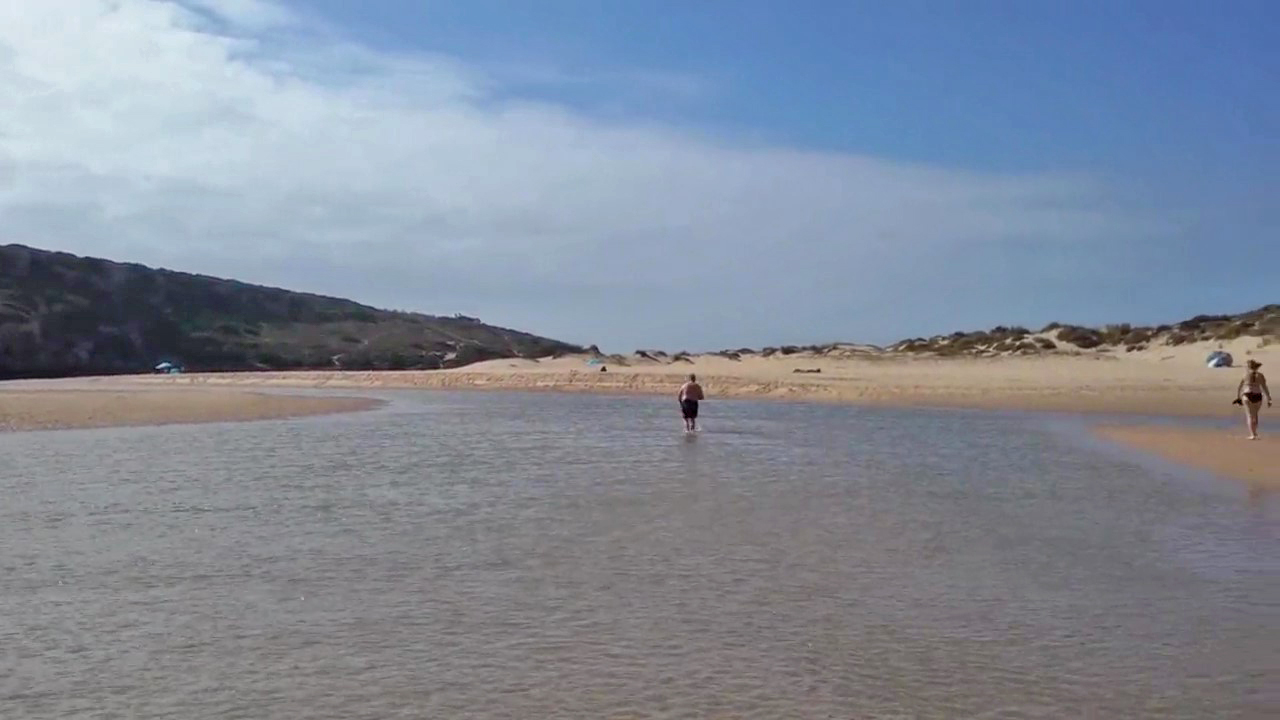
Seemingly out of nowhere, we round the last bend and there it is, the Wild Atlantic Coast.
The “second beach” is a long strip of sand with the wild Atlantic ocean breaking over it. The river meets that Atlantic beach at the far southern end we turn right here to follow our circular walk route northward along the length of the beach. Many “surf dudes” are in evidence here and at the north end of the beach we find surf schools with their banners and tents (remember what we said about surf shops in Aljezur) because this is a slice of surfers paradise.
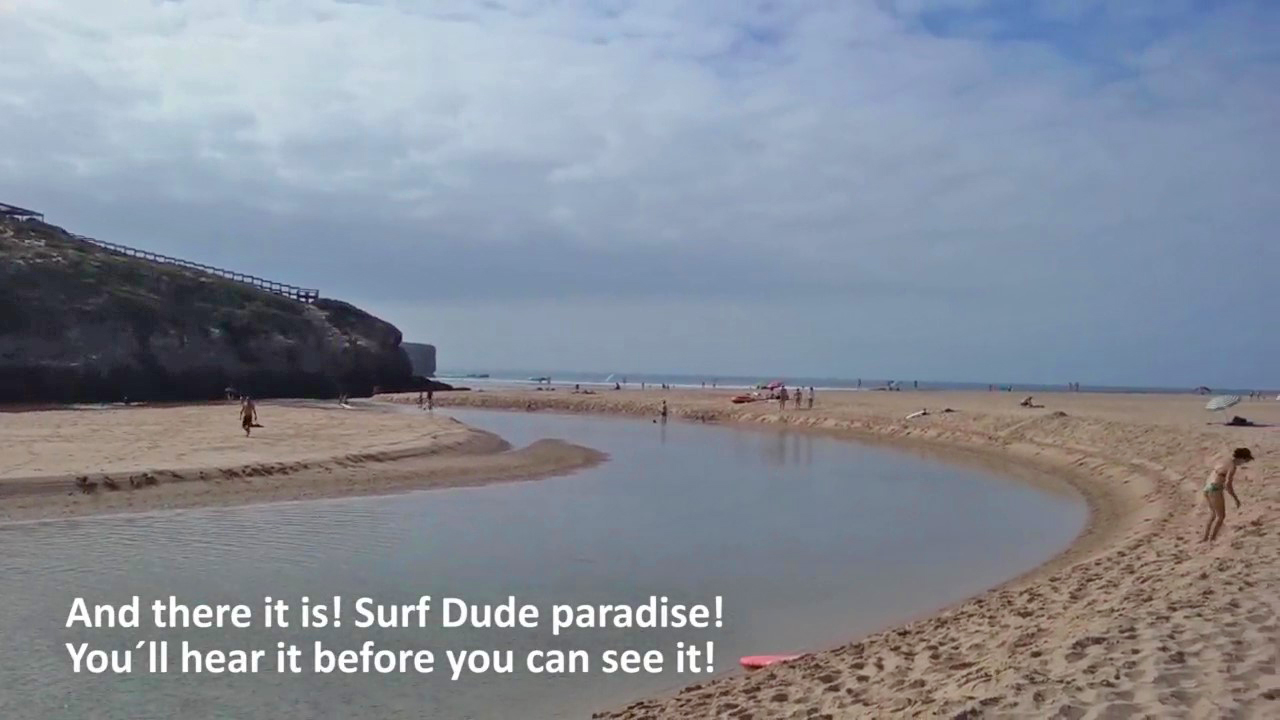
In a marked contrast to the river beach, it is always busier here and the surf dudes add to the general buzz and appeal of this part of the beach.
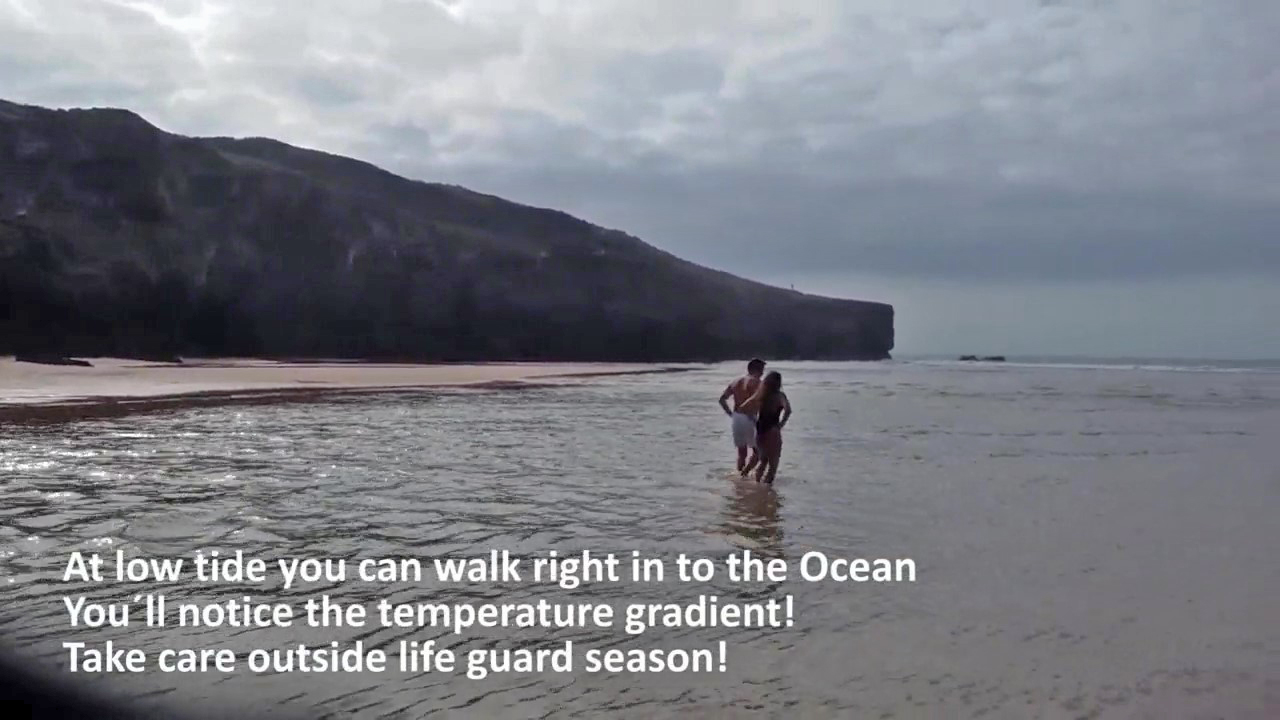
Remember though that this is the wild Atlantic now. Take care at all times and do not enter the water here out of lifeguard season unless you are a seasoned swimmer.
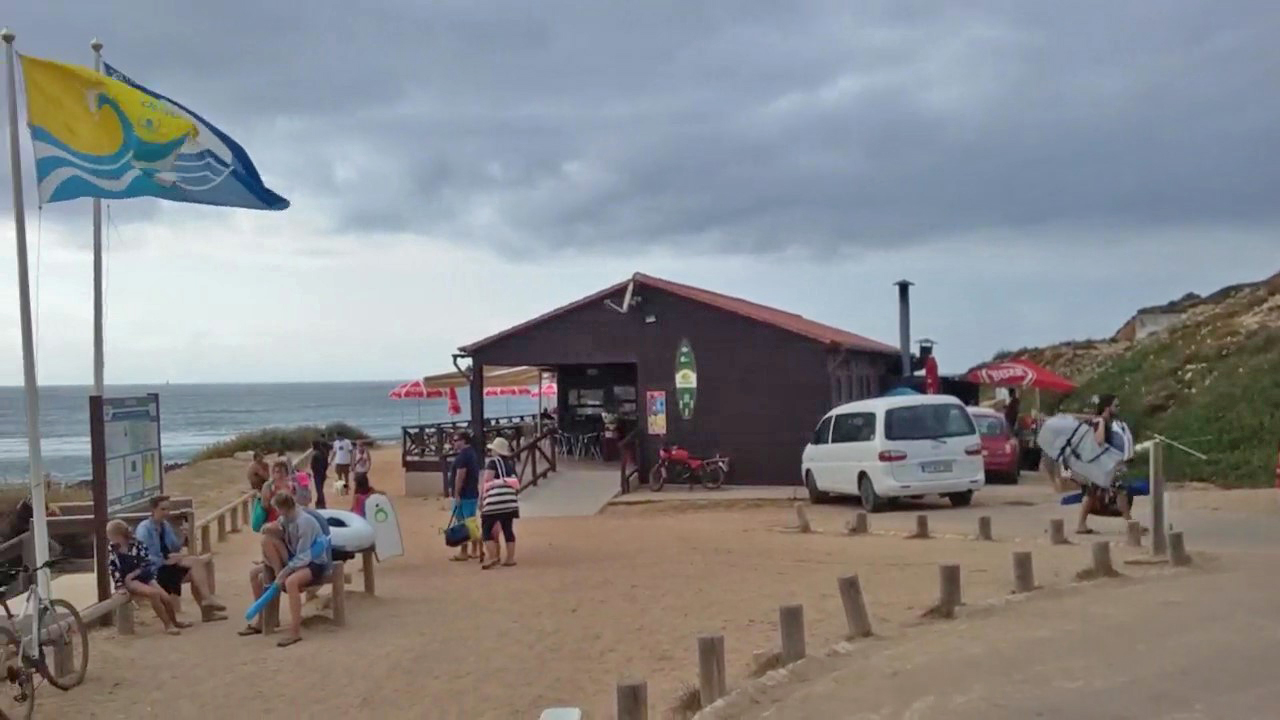
As we walk northwards along the beach we find some new delights in the form of the Paraiso do Mar restaurant and snack bar where we enjoy reasonably priced drinks and have a choice of snacks and a couple of light main meal options like chicken piri-piri or simply grilled fish.
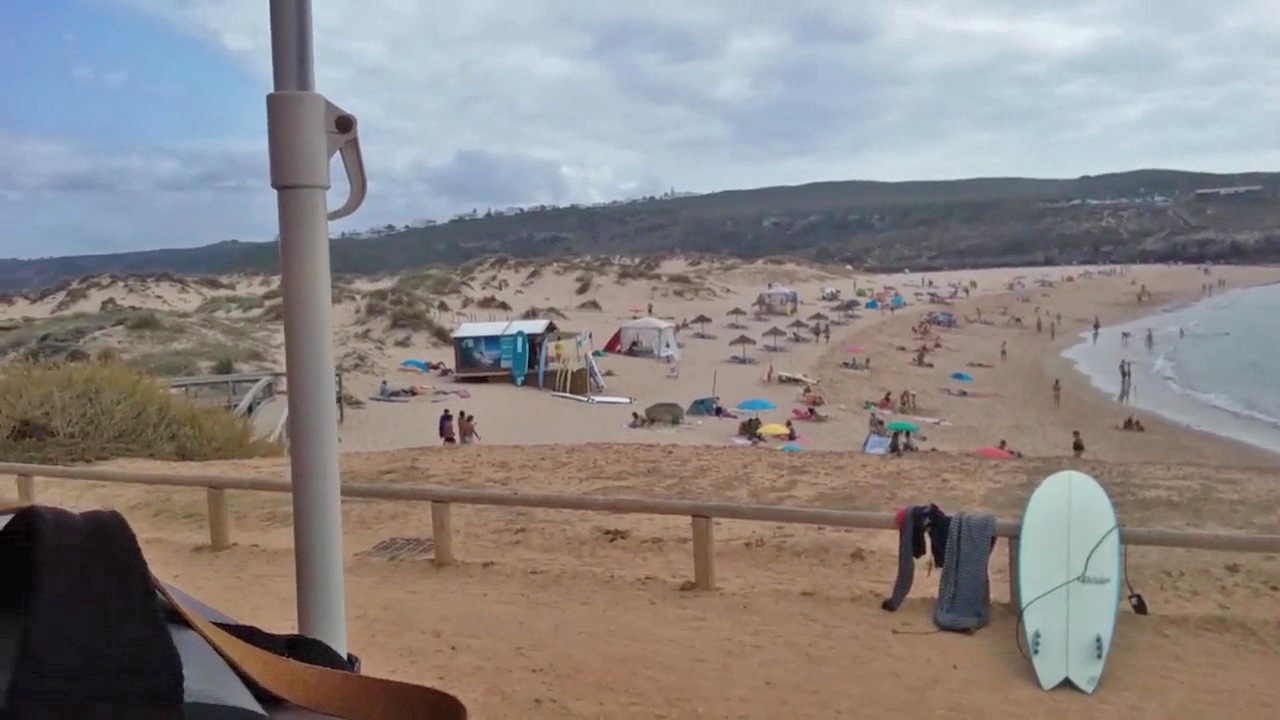
Oh and then there´s the “giant” of course! Did we mention him/her No?
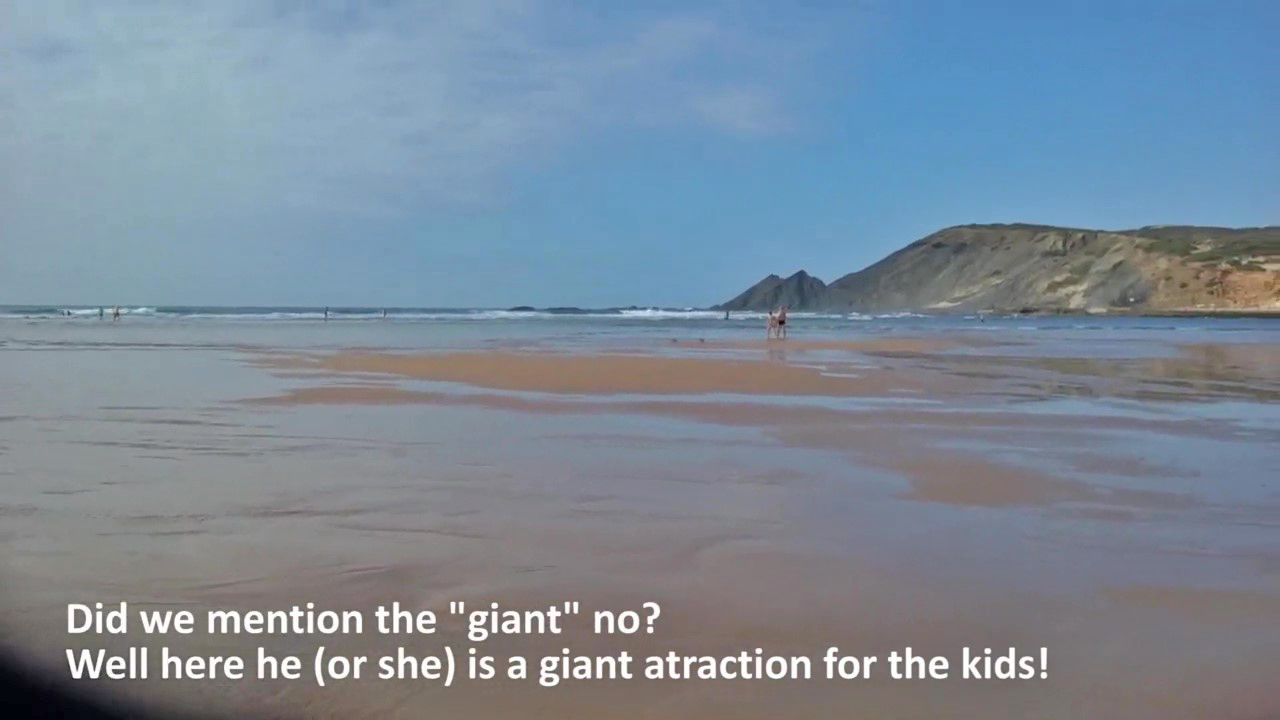
Has anyone seen the giant?
Well at this point it should be pretty obvious where the “giant” is. A rock formation at the north end of the beach looks just like a giant laying down with his head in the ocean. Kids love it!
If we walk north past Paraiso the beach changes once again to stony outcrops and rock pools, more for the kids to explore but watch out for those Atlantic breakers.
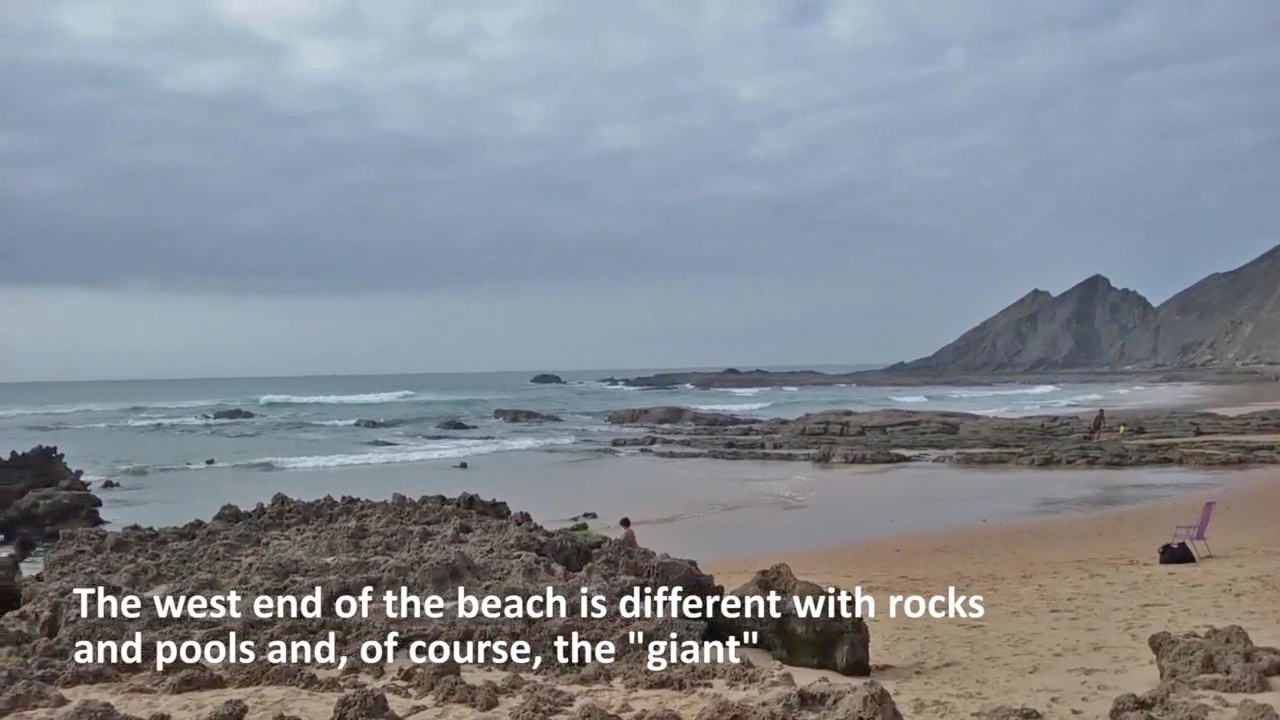
Notice the change in the weather? We are right by the Atlantic here on the “wild west” coast and you can often see the water cycle in action here as the warm September waters meet an onshore wind
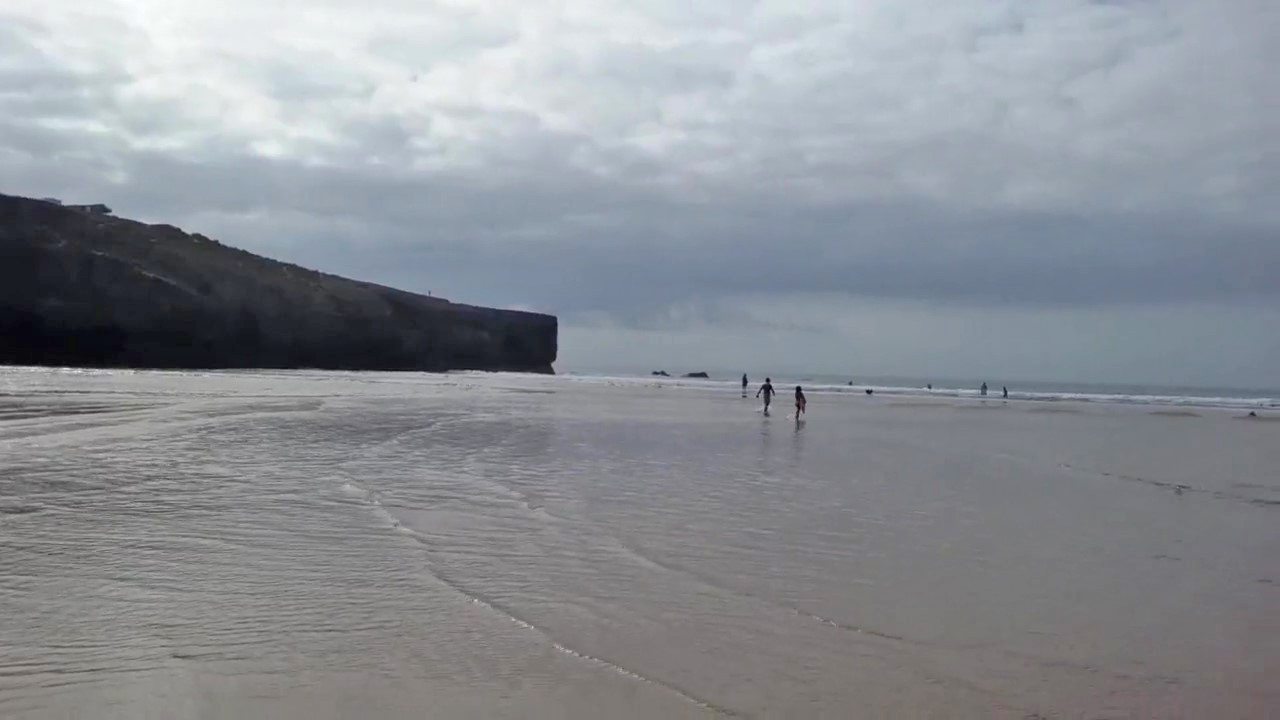
Well, we´ve had a beer and a coffee and the weather is changing! At Amoreira you can see the water cycle in action some days as the Atlantic mist hits the coast. So it´s time to head back to the car.
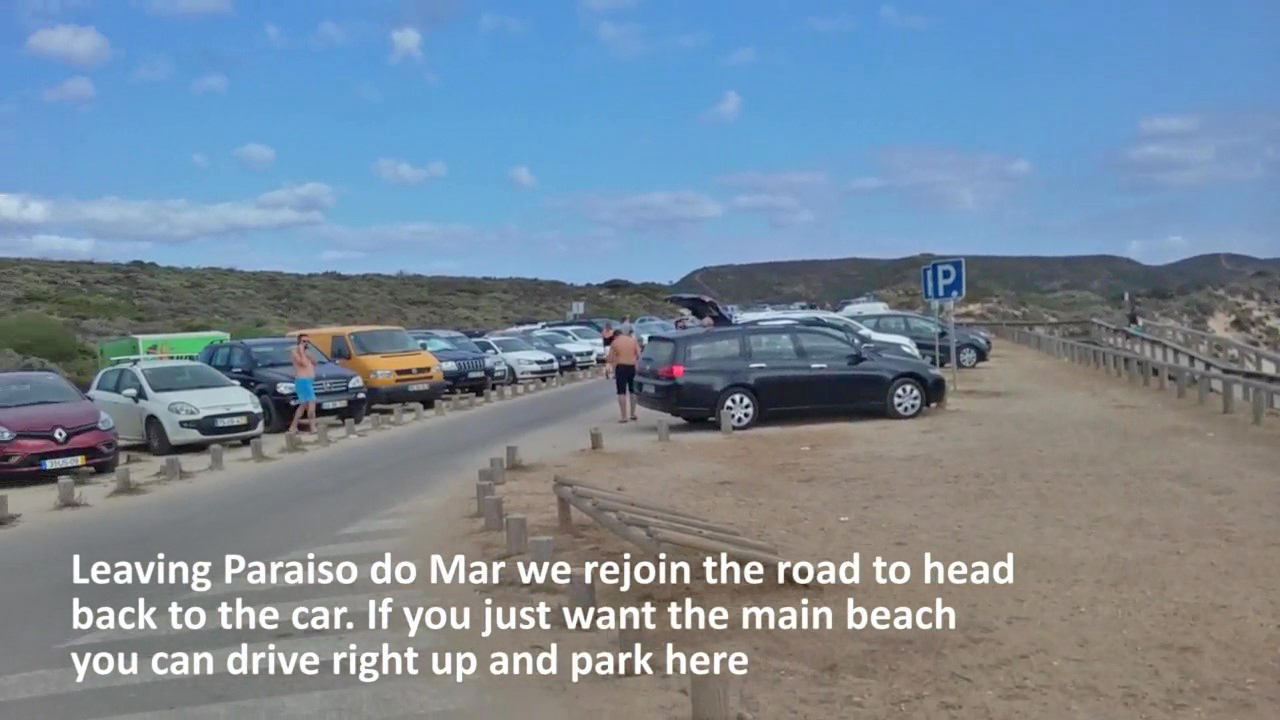
We walk out from the Paraiso do Mar car park along the top end of the road with the dunes and river on our left and the Atlantic behind us. It´s about 1km back to the car. A simple hack for this trip if you just want the Atlantic beach is to drive on until you reach the Paraiso do Mar car park which forms the turning head at the end of the road.
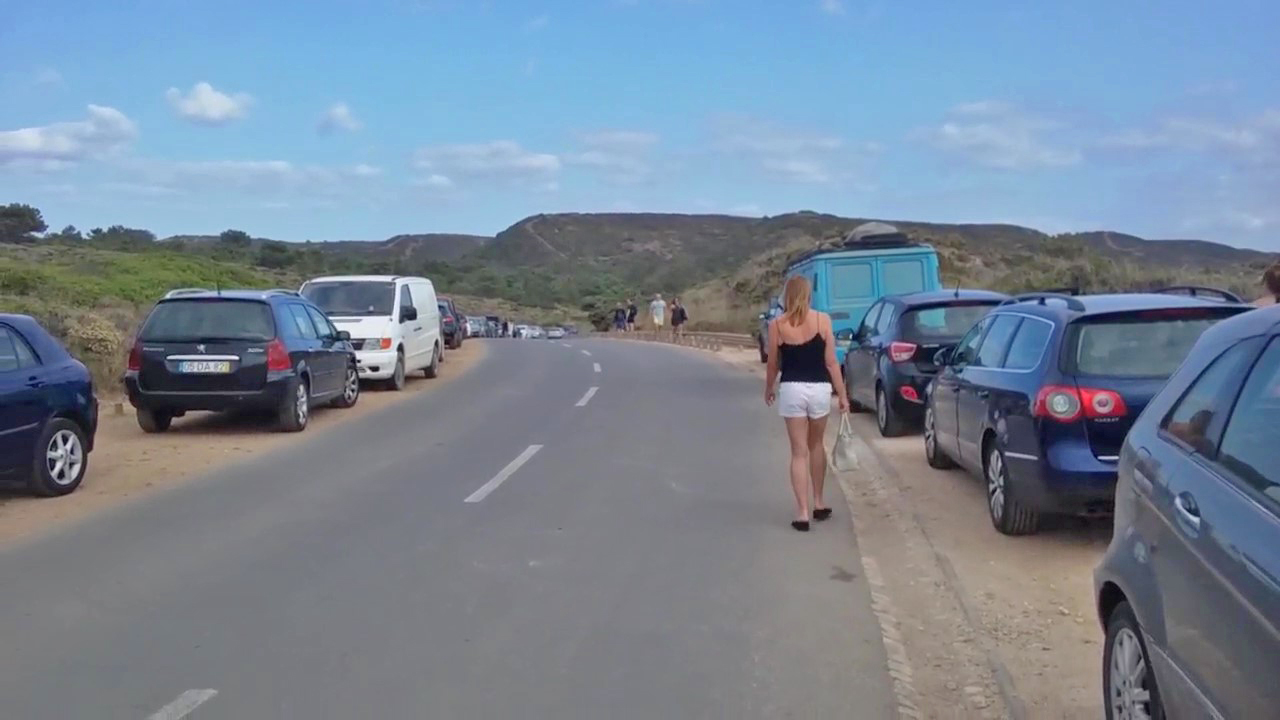
So that´s it, another day, another slice of paradise in the Algarve.
[adinserter block=”5″]
Our Top Reasons to love Praia da Amoreira
- Scenic beauty this place is incredibly photogenic.
- Peace and Quiet even at high season you can find a spot here where you can relax.
- The “twin beaches” it´s like two locations in one.
- Great for children we challenge any child not to love the River and the “giant”.
- Paraiso do Mar has everything you need to get you through the day.
- Visit Amoreira at any time. It will be busier in August but it´s still a far cry from our main resort beaches. If you love photography, visit on a wild winter´s day and spend an hour (and fill up a memory card) in awe of the Atlantic.

